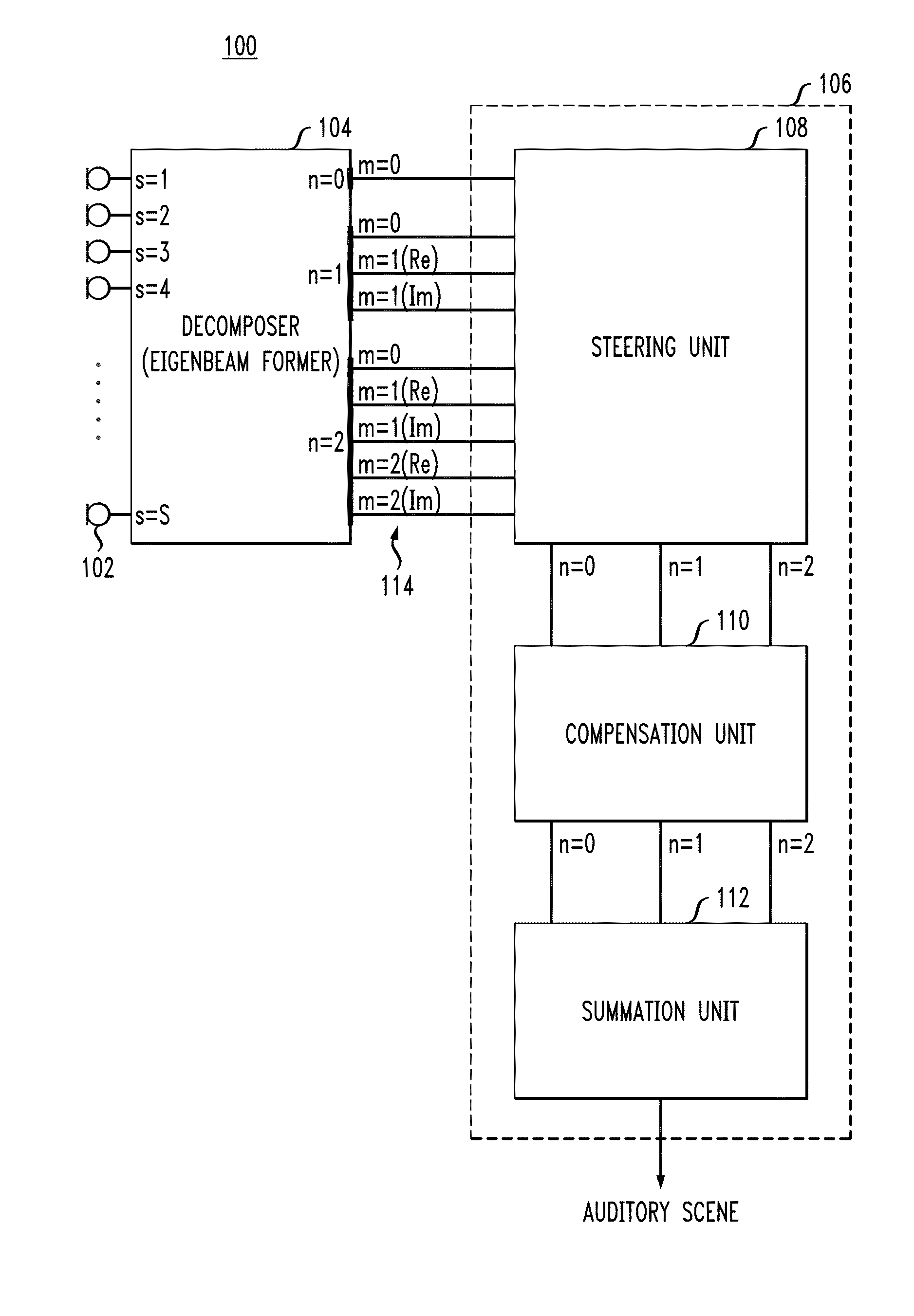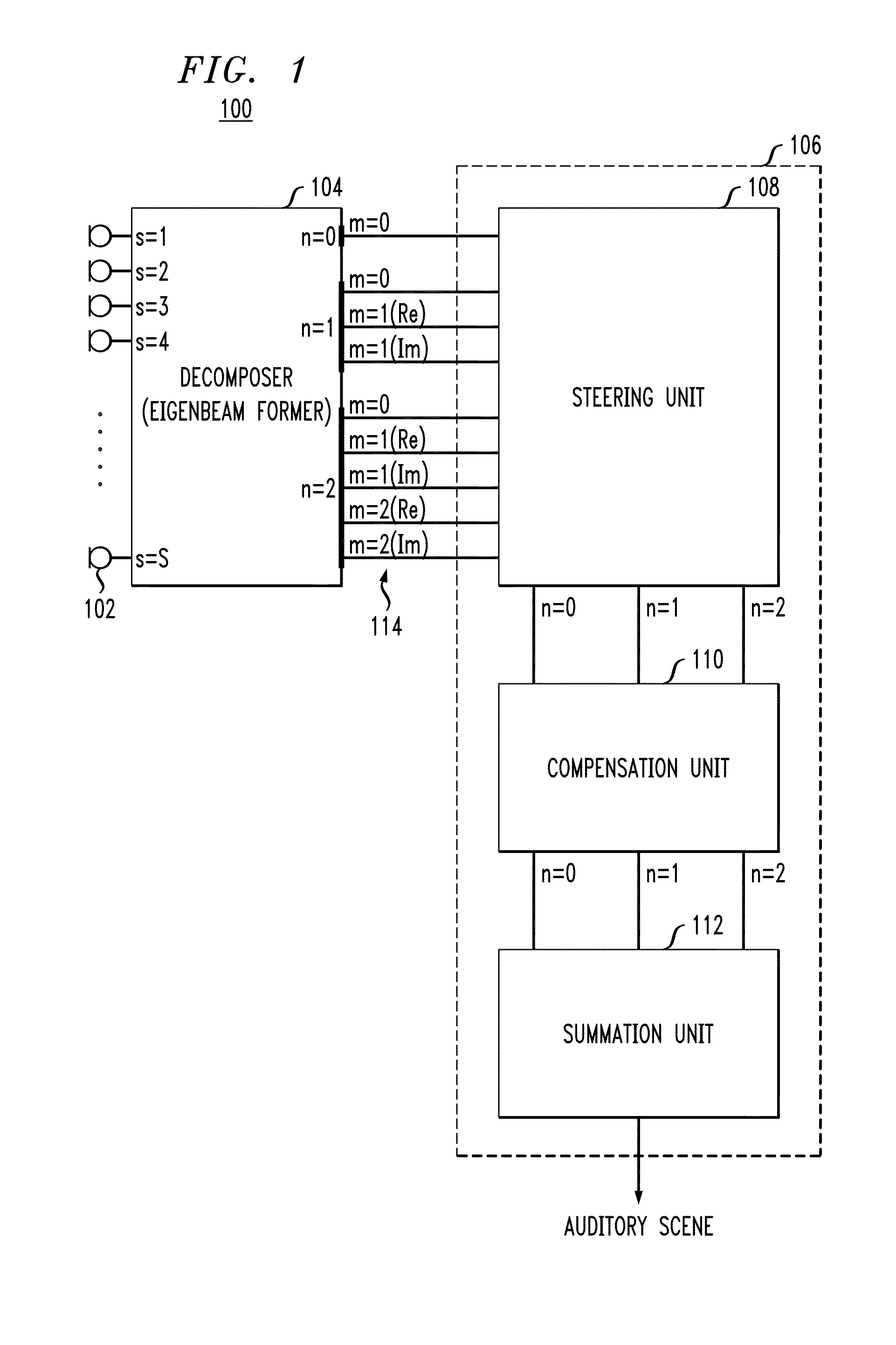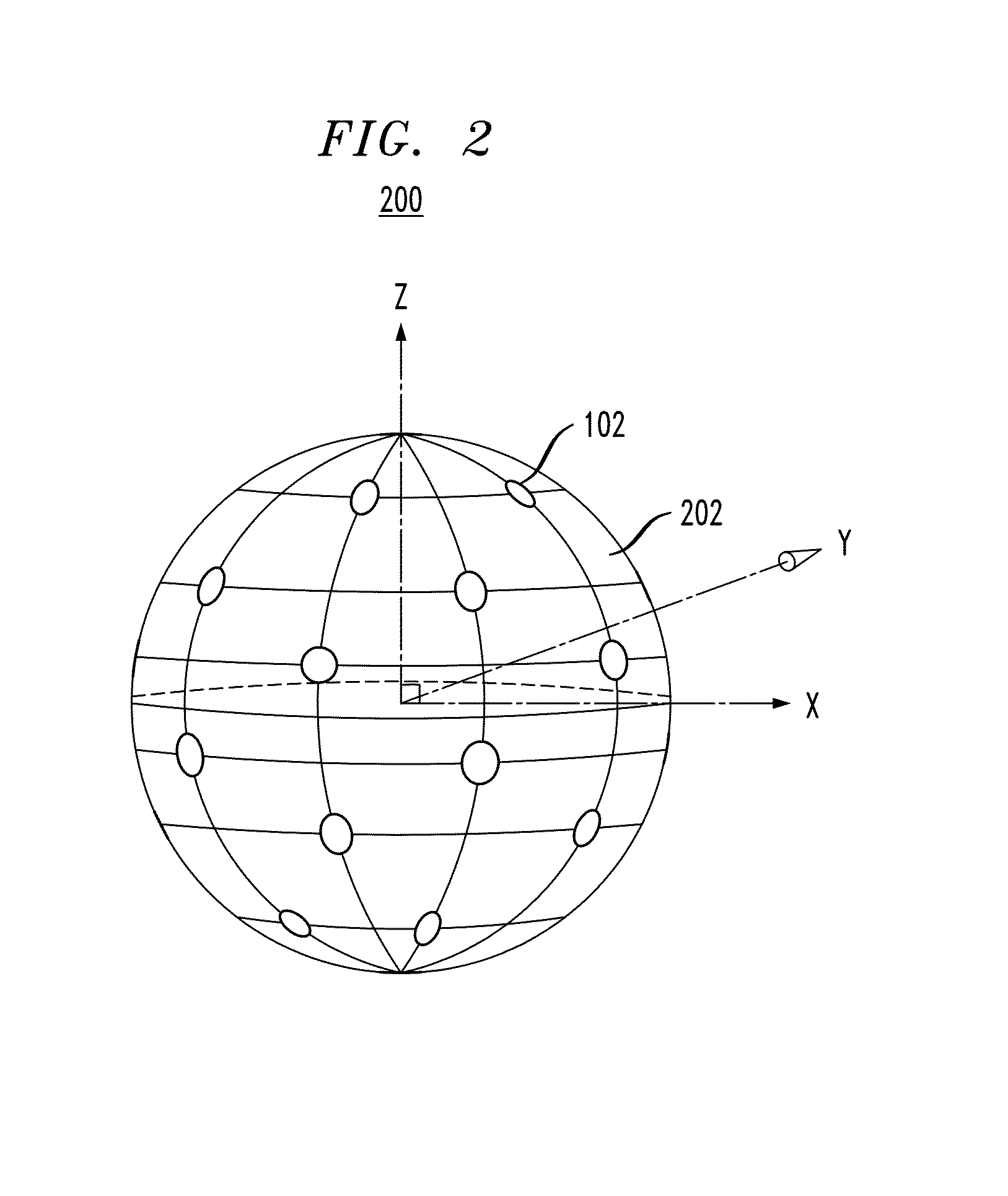Polyhedral audio system based on at least second-order eigenbeams
a polyhedral and eigenbeam technology, applied in the field of acoustics, can solve the problem of relatively high implementation cost of such devices, and achieve the effect of accurate rendering of the auditory scen
- Summary
- Abstract
- Description
- Claims
- Application Information
AI Technical Summary
Benefits of technology
Problems solved by technology
Method used
Image
Examples
Embodiment Construction
[0045]According to certain embodiments of the present disclosure, a microphone array generates a plurality of (time-varying) audio signals, one from each audio sensor in the array. The audio signals are then decomposed (e.g., by a digital signal processor or an analog multiplication network) into a (time-varying) series expansion involving discretely sampled, (at least) second-order (e.g., spherical) harmonics, where each term in the series expansion corresponds to the (time-varying) coefficient for a different three-dimensional eigenbeam. Note that a discrete second-order harmonic expansion involves zero-, first-, and second-order eigenbeams. The set of eigenbeams form an orthonormal set such that the inner-product between any two discretely sampled eigenbeams at the microphone locations, is ideally zero and the inner-product of any discretely sampled eigenbeam with itself is ideally one. This characteristic is referred to herein as the discrete orthonormality condition. Note that,...
PUM
 Login to View More
Login to View More Abstract
Description
Claims
Application Information
 Login to View More
Login to View More - R&D
- Intellectual Property
- Life Sciences
- Materials
- Tech Scout
- Unparalleled Data Quality
- Higher Quality Content
- 60% Fewer Hallucinations
Browse by: Latest US Patents, China's latest patents, Technical Efficacy Thesaurus, Application Domain, Technology Topic, Popular Technical Reports.
© 2025 PatSnap. All rights reserved.Legal|Privacy policy|Modern Slavery Act Transparency Statement|Sitemap|About US| Contact US: help@patsnap.com



